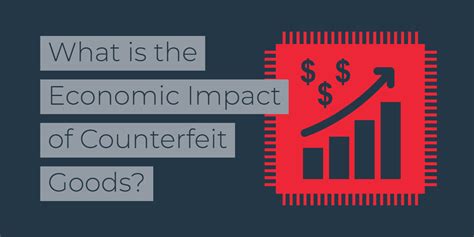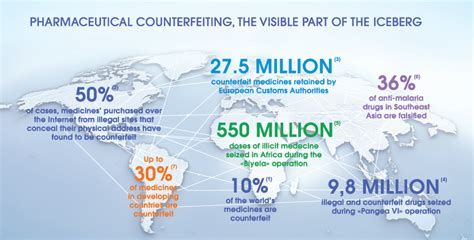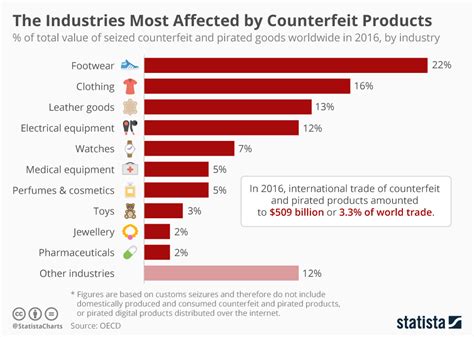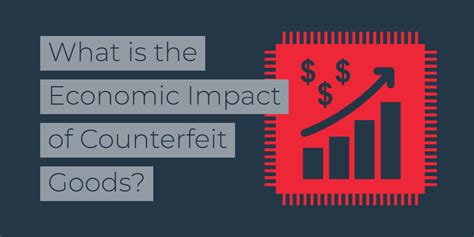The Real Costs Associated with Counterfeit Products
1. How Do Counterfeit Products Impact the Economy?
Counterfeit products have a detrimental impact on economies worldwide. This impact is felt across various industries, causing losses in revenue, affecting employment, and reducing investments in innovation. When counterfeits flood the market, legitimate businesses struggle to compete, resulting in reduced market share and revenue. To illustrate the economic costs:
- Lost Revenue: Legitimate companies suffer from reduced sales as counterfeit products often undercut authentic ones, leading to a significant loss in revenue.
- Job Loss: Businesses impacted by counterfeiting may reduce their workforce due to financial strains.
- Lower Tax Revenues: Governments lose out on tax income when companies report lower profits due to counterfeit competition.
According to various studies, the impact on the global economy is staggering, with losses reaching into billions of dollars annually. By driving revenue away from genuine businesses, counterfeiting stifles overall economic growth.

2. How Does Counterfeit Product Manufacturing Harm Employment?
The rise of counterfeit goods directly impacts employment in affected industries. When legitimate businesses face counterfeit competition, they may be forced to downsize, leading to job losses. This is especially evident in industries such as:
- Fashion and Apparel: Fashion companies lose revenue due to fake products, leading to layoffs in production and retail sectors.
- Electronics: Counterfeit electronics often dominate certain markets, putting manufacturers at a disadvantage.
As counterfeiters don’t need to meet regulatory standards or pay fair wages, they can sell products at lower prices, which puts legitimate companies at a further disadvantage.
3. What Are the Health and Safety Risks of Counterfeit Products?
Counterfeit products pose serious health and safety risks to consumers. Products that fail to meet safety standards can lead to physical harm, illness, or worse. Commonly counterfeited items that pose health risks include:
- Pharmaceuticals: Counterfeit medicines may contain harmful or ineffective ingredients, posing serious risks to consumers.
- Cosmetics: Fake cosmetics often contain allergens or dangerous chemicals, leading to skin irritation or infection.
These products lack regulatory oversight, increasing the risk of harm to consumers, who may unknowingly purchase dangerous products.

4. How Do Counterfeit Products Impact Brand Reputation?
Counterfeiting can severely harm a brand’s reputation. When consumers purchase fake products that fail to meet quality standards, they may associate the negative experience with the legitimate brand, leading to:
- Loss of Customer Trust: Consumers may lose confidence in the brand, assuming the product quality is poor.
- Brand Dilution: When counterfeit products flood the market, they reduce the perceived exclusivity and value of the authentic brand.
This impact on brand reputation can be challenging to recover from, leading to long-term effects on customer loyalty and sales.
5. How Does Counterfeiting Affect Innovation?
Counterfeit products stifle innovation by reducing the funds available for research and development. Businesses that lose revenue to counterfeiters have less capital to invest in new technologies and product improvements, affecting:
- Product Development: Reduced revenue limits the ability to innovate new products.
- Research Opportunities: Counterfeiting diverts funds that could be used for advancing technology or improving product safety.
This lack of investment in innovation ultimately slows down technological progress and reduces consumer options.
6. How Much Revenue is Lost Globally Due to Counterfeit Products?
The global economic loss due to counterfeit products is immense, with studies estimating losses of up to $500 billion annually. Industries most affected by counterfeit losses include:
| Industry | Estimated Annual Loss |
|---|---|
| Fashion | $200 billion |
| Electronics | $100 billion |
| Pharmaceuticals | $75 billion |

7. How Are Governments Fighting Against Counterfeit Products?
Governments worldwide are implementing measures to combat counterfeiting. Some of the most common strategies include:
- Stricter Regulations: Governments enforce stricter penalties and controls to curb counterfeit production.
- Awareness Campaigns: Public education campaigns help consumers identify and avoid fake products.
International cooperation is also key, as counterfeit operations often span multiple countries, making enforcement challenging without cross-border collaboration.
8. How Does Counterfeiting Affect Environmental Sustainability?
Counterfeit goods often bypass environmental regulations, contributing to pollution and waste. These products may be produced with harmful chemicals and unsustainable practices, impacting:
- Waste Management: Fake products are often discarded quickly, leading to increased waste.
- Pollution: Many counterfeit goods are produced without following eco-friendly standards.
This disregard for sustainability exacerbates environmental degradation and harms ecosystems.

9. What Are the Legal Costs for Companies Affected by Counterfeiting?
Companies affected by counterfeit goods incur significant legal costs in their fight against these products. Legal efforts to protect intellectual property (IP) rights include:
- Litigation: Companies spend large sums on lawsuits to protect their trademarks and IP.
- Trademark Registration: Registering and defending trademarks across regions adds to the cost burden.
These costs can be substantial, as companies must navigate complex international laws to combat counterfeiting effectively.
10. How Can Consumers Protect Themselves from Counterfeit Products?
Consumers can take steps to avoid counterfeit products by following best practices, including:
- Research: Familiarize yourself with authentic brand products to identify potential counterfeits.
- Buy from Reputable Sources: Purchase products directly from brands or trusted retailers.
Consumers should remain vigilant, especially when shopping online, where counterfeit goods are more prevalent.
Summary Table
| Topic | Key Points |
|---|---|
| Economic Impact | Loss of revenue, job cuts, reduced tax income |
| Health and Safety | Risks from fake pharmaceuticals and cosmetics |
| Brand Reputation | Loss of consumer trust, brand dilution |
| Innovation | Decreased funding for R&D |
| Environmental Impact | Increased pollution and waste |
FAQ
What are the main economic costs of counterfeit products?
Counterfeit products lead to lost revenue, job losses, and reduced tax income, affecting economies worldwide.
How do counterfeit products affect employment?
Counterfeiting causes job losses as legitimate businesses struggle to compete, leading to workforce reductions.
Why are counterfeit products dangerous to health and safety?
Fake products may contain harmful ingredients or fail safety standards, posing serious risks to consumers.
How can counterfeit products harm a brand’s reputation?
Consumers may associate low-quality fake products with the authentic brand, damaging its reputation and trust.
How do counterfeit products hinder innovation?
Reduced revenue from counterfeiting limits investment in research and development, slowing innovation.
What are the environmental impacts of counterfeit goods?
Counterfeit products often bypass environmental regulations, leading to pollution and increased waste.
How can consumers avoid counterfeit products?
Consumers can avoid counterfeit goods by buying from reputable sources and familiarizing themselves with authentic products.


